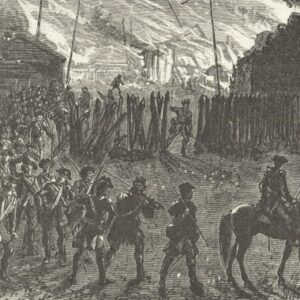
First impressions of the inhabitants of what later became known as the Americas, are very interesting to read from a historical perspective. It was primarily Jesuits and other religious orders recording what they experienced in the “new world.”
The first tribal inhabitants of Ontario and New York areas as far as is known at this time was the “Attiwandaron” otherwise known as the Neutrals who were first mentioned as occupying what is now Brant County with in an around Brantford its cultural centre. Hunting grounds ranged from the Genesee Falls to Sarnia, and South of a line drawn from Toronto to Goderich. In 1535, French navigator and explorer Jaques Cartier established the first French colony calling the huge newly “found” land mass New France. Samuel DeChamplain followed in 1615 bringing Fanciscan Brotherhood friars with him with the goal of establishing a missionary centre among the “Indians”.
In 1626, Father La Roche Daillon of the Recollet order of the Catholic Church studied the original inhabitants and found them to be “a powerful tribe”.
In his notes Daillon registers twenty-eight villages in Neutral country, including the principle village of Kandoucho, which later became Brantford, according to several researchers including Dr. Coyne and Adam Hunter.
Hunter, Secretary of the Ontario Historical Society, agrees Brantford to be the centre of the Neutrals.
In 1640 Fathers Breboeuf and Chaumonot also visited the Neutrals in the Brantford Arena.
In most cases, copious notes were taken revealing their customs and culture but also their appearance.
Accounts from 1640 estimate between 20,000 and 30,000 inhabitants. That would have been at a very low population level given the tribal wars, famine and sickness which reduced its numbers significantly by the time the survey was taken.
“They were great tobacco raisers and users,” according to Jesuit reports. They were also noticeably bigger, stronger and more fit than their European invaders.
“They were physically the finest class of Indians on the American continent, tall, straight and well built, remarkable for their endurance and activity, and as a body so free of any deformity that Daillon states that during his stay among them, he did not notice a single lame, hunchbacked or deformed person. They were inveterate gamesters, often gambling for days and nights. In summer the men wore only moccasins, and the loin cloth or brayer; they tattooed their bodies with powdered charcoal. Many of their chiefs and leading warriors underwent the trying ordeal of tattooing with fixed pigments from head to foot; snakes, worms, animals, monstrosities of every conceivable nature ornamented, or disfigured their persons. In winter they clothed themselves in the skins of beasts, but winter or summer, they wore no covering on their heads. They dressed their hair each according to his own peculiar whim, but they never attempted to curl it and held in contempt the man, who even by the accident of nature, had curled hair,” according to another report.
It was also observed that “parents were held in great respect by their children,” and they were very fond of dancing, for pleasure, for ceremony, for peace and for war.
Around 1650, the Hausenosaunee (Iroquois Confederacy) had irradiated the Neutrals as a power and occupying the greater part of the Brantford, Grand River area, long before the Haldimand Deed.
Father Andrew White’s First Impressions 1634, wrote “that the soil appears particularly fertile, and strawberries, vines, sassafras, hickory nuts, and walnuts, we tread upon every where, in the thickest woods. The soil is dark and soft, a foot in thickness, and rests upon a rich and red clay. Every where there are very high trees, except where the ground is tilled by a scanty population. An abundance of springs afford water. No animals are seen except deer, the beaver, and squirrels, which are as large as the hares of Europe. There is an infinite number of birds of various colors, as eagles, herons, swans, geese, and partridges. From which you may infer that there is not wanting to the region whatever may serve for commerce or pleasure. . .”











